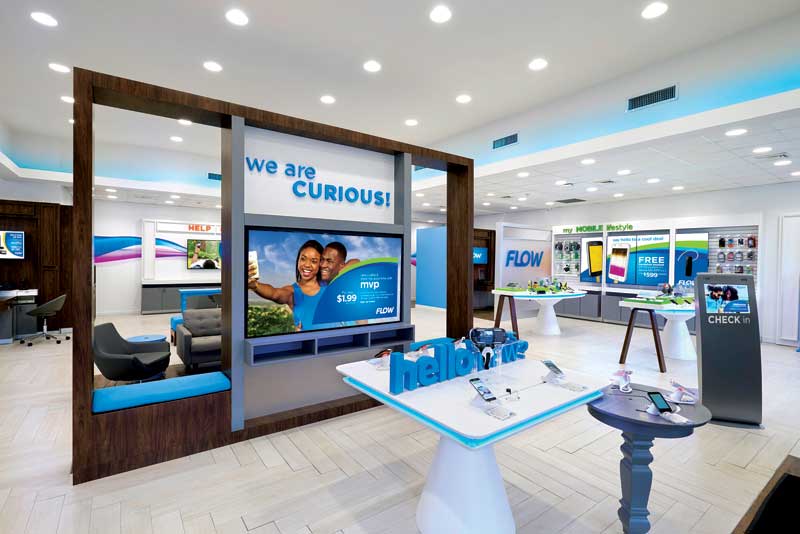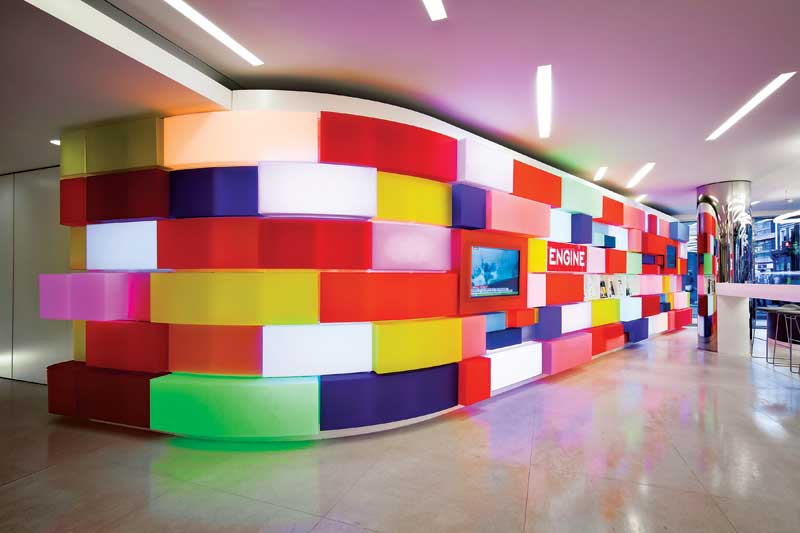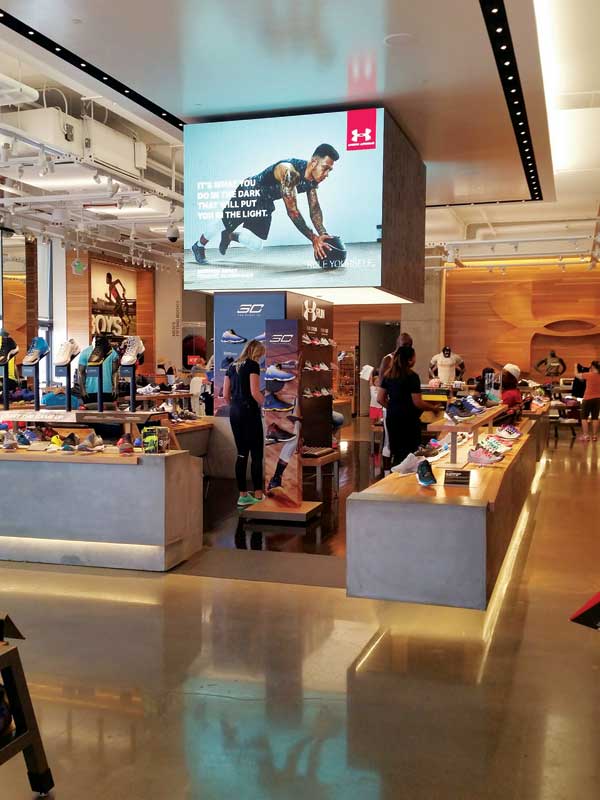Sign Design: The advent of branded environments
by all | 12 May 2017 9:37 am
 [1]
[1]Photo courtesy Shikatani Lacroix
By Craig Berger
With all of the constant discussion of how new, digital technologies continue to redefine the sign and graphics industry, it may be easy to lose sight of a much larger trend that is now upending the way design is taught and practised in the industry and, for that matter, how sign shops present themselves to clients. This trend, hidden in plain sight for more than 60 years, is the branding of environments.
A long history
Branding an environment, i.e. designing a space to promote specific commercial and/or institutional interests, has deep roots in the field of modern design. In the 1950s, designers like Alvin Lustig and Elaine Lustig Cohen pioneered the integration of identity and graphics, particularly with their work on high-rise office buildings and early shopping malls. In the ’60s, the design firm Gensler promoted the idea of branding interior corporate spaces and retail stores, leading to its seminal work for The Gap. (Today, Gensler is among the largest design firms in the world.)
It was not until the ’80s, however, that designer Eva L. Maddox first coined the term ‘branded environments.’ She built a successful practice around the concept, which later became part of Perkins+Will.
Mixed results
Yet, these pioneering efforts did not result in branded environments becoming represented among central design practices. With notable exceptions like Hellmuth, Obata + Kassabaum (HOK), Rogers Taliaferro Kostritsky Lamb (RTKL) and FRCH Worldwide, the vast majority of architecture and interior design firms did not internally establish any brand strategies. Further, environment-branding methodologies were not integrated into most architecture and interior design schools’ curriculums. Instead, they were mainly addressed as ‘add-ons’ by graphic design schools. They also branched off into specialized fields like wayfinding and exhibition design.
Branding firms, meanwhile, diversified their services with ever-widening tool kits to support their clients. This involved ‘keeping one toe in the pool’ with respect to branded environments.
The sign industry, for its part, became more heavily segmented, with only a few companies taking on the responsibility of developing entire branded environments. Such work tended instead to fall on project management firms, which juggled multiple specialists.
 [2]
[2]The interview design of Lego’s headquarters (HQ) in Denmark reflects the company’s products.
Photo courtesy C.F. Moller Architects
Massive changes
Today, external trends are starting to bring massive changes, which in turn are finally bringing branded environments to the forefront as their own, well-defined field of business.
First, many architecture firms have now integrated brand strategies with graphic design practices. This has brought practices that were once the purview of companies with hundreds of employees into many firms with less than 50 designers.
Secondly, the architects’ efforts have been matched by branding firms, such as Toronto-based Shikatani Lacroix and Vancouver-based SmartDesign Group, that have grown ever more capable at addressing physical environments within their larger practice. This has increased competition, making brand strategies even more of a necessity for the architecture firms.
The sign industry is seeing even stronger measures take hold in response to even stronger competitive pressures. The chaotic nature of today’s retail sector, for example, is forcing many fixture and display manufacturers to leverage the skills they honed in stores to expand into corporate, health-care and other environments. Also, destructive price wars over wide-format inkjet printed graphics are prompting many sign shops to pursue more lucrative applications through direct printing, specialty materials and fields like interior decor.
Even large-scale trade show booth and display manufacturers, like Freeman and MC2, have gotten into the act, turning their exhibitry expertise to placemaking.
 [3]
[3]The retail sector has been particularly key in the development of branded environments.
Photo courtesy Uniqlo
Leveraging new opportunities
With all of these massive changes occurring, many sign companies are still only just beginning to perceive branded environments as a key business strategy. The leaders on this front have been specialty sign fabricators who work directly with branding-oriented architects and environmental graphic design (EGD) professionals. In such scenarios, everyone involved gets to adapt their own technical expertise to meet ever-expanding needs, from large-format printed graphics to digital displays to public art.
Some sign companies that specialize in large-scale rollouts of branded graphics have also become leaders, by building on their existing relationships with designers and clients and taking on further responsibilities for decorating building interiors and exteriors.
The majority of small to medium-sized sign companies focus on more highly segmented areas—e.g. identification (ID) signs, wayfinding systems or donor recognition walls—and, as such, rarely implement brand strategy practices in their work.
Similarly, many architects are still not exploring the possibilities for integrating branding into more types of buildings, including industrial parks, residential housing, elder-care facilities and strip malls. In some cases, they simply lack access to—or a sufficient budget for—assistance from appropriately experienced designers.
Academic programs focusing on architecture and interior design have remained slow in adopting environment-branding practices. This has left an opening for the sign industry. By educating both architects and their clients about the sign industry’s technologies and techniques for integrating brand identities into built environments, signmakers will be better-positioned to remain competitive in this new business frontier, rather than ceding opportunities to other branding-savvy companies.
Craig Berger is chair of the visual presentation and exhibition design department of the Fashion Institute of Technology’s (FIT’s) School of Art and Design and runs his own firm, Craig Berger Management Consulting, which specializes in assisting fabricators, manufacturers and institutions with design-based marketing and education strategies. For more information, contact him via e-mail at craigberger19@comcast.net[4].
- [Image]: https://www.signmedia.ca/wp-content/uploads/2017/05/brand_shikatani1.jpg
- [Image]: https://www.signmedia.ca/wp-content/uploads/2017/05/brand_Lego-Headquarters.jpg
- [Image]: https://www.signmedia.ca/wp-content/uploads/2017/05/brand_Uniqulo.jpg
- craigberger19@comcast.net: mailto:craigberger19@comcast.net
Source URL: https://www.signmedia.ca/sign-design-the-advent-of-branded-environments/